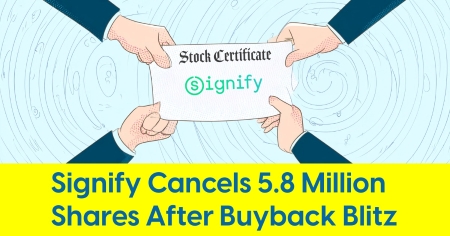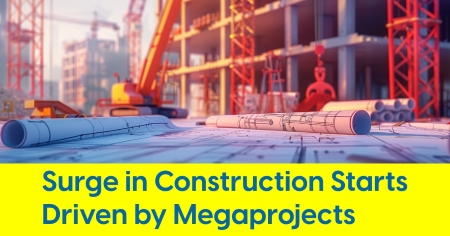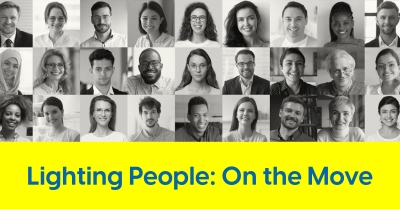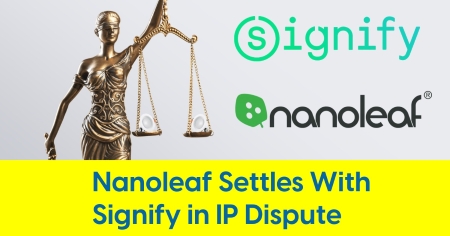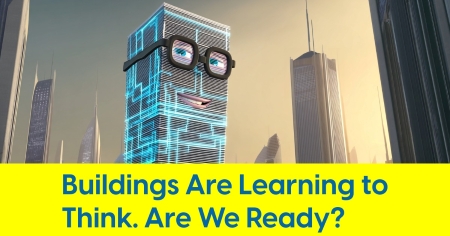May 5, 2025
Reporting on LightFair: Why This Year Feels Different

An excruciating essay by Al Uszynski, Editor, Inside Lighting
A candid look at a landmark event now facing new expectations and pressure
There are some articles I still hesitate to write.
Not because they’re controversial, and not because I’m afraid of criticism. It’s more complicated than that, because sometimes the hardest stories to cover are the ones that feel personal.
In the world of commercial and industrial lighting, LightFair has always been more than just a trade show. And for me — and I suspect for many of you — it’s been something else entirely: a rite of passage. A proving ground. A place where careers blossom, products debut, and the industry gathers to take its own temperature.
I remember my first LightFair vividly. It was 1994, one year out of college, and I walked into the Javits Center in New York City like I was entering a cathedral. Intimidated, overwhelmed, and completely captivated. Over the decades, I grew up at LightFair — professionally, at least. I found mentors. I found competitors. I found community.
And during the LED boom of the 2010s, LightFair hit its peak. The market was on fire. Old technologies were being shoved offstage, replaced by LED innovation that moved faster than most companies could keep up with. New brands emerged from nowhere. Legacy brands struggled to keep pace. At LightFair, you could feel the future accelerating.
Crowds surged. Booths grew into small cities. Press releases poured out like confetti. LightFair wasn’t just a trade show — it was the epicenter of an industry in transformation. And in 2019, over 27,000 people showed up in Philadelphia to see what came next.
But that was then.

Above: Las Vegas Convention Center website cites 8,500 estimated attendees for LightFair 2025 (May 2).
When Reporting Feels Personal
Now, in 2025, LightFair is something else. Still important. Still filled with potential. But different. Smaller. A little uncertain. And, to be blunt, under pressure.
And that brings me to the conflict I’ve been wrestling with — the reason I’m writing this article.
Some stories are tough because they hit close to home — not just professionally, but personally. Reporting on layoffs, closures, trade shows under pressure, even agency reshuffles, means reckoning with real-world consequences for real people. But there’s another kind of story that carries its own emotional weight.
I’ve always struggled with obituaries. Not because the people who passed don’t deserve a tribute — they absolutely do — but because there’s a part of me that worries it could feel exploitative. A Lighting Person passes away, and suddenly there's a surge in clicks. Even when the intent is pure, it feels emotionally complicated. I question: Am I honoring someone’s legacy or leveraging their death for website traffic? It’s a gut check and I mostly abstain for this reason.
Same thing with bankruptcies, abrupt closures, and industry layoffs. We cover them because we must. Because our readers rely on us to tell them the truth. But knowing that real people — good people — are losing jobs? That never gets easier. I still think about the folks at Universal Lighting Technologies and Douglas Controls, blindsided by the news on a Wednesday morning in March 2023.

Even agency line card changes, which seem routine on the surface, but major changes can be brutal. When a new startup agency is awarded a big line, another loses it — and people’s livelihoods can hang in the balance. We report it. Carefully. Thoughtfully. But never superficially.
And finally, take ArchLIGHT Summit in Dallas. In its early years, reviews were mixed — and my own reporting in 2021 through 2023 reflected some of that negative feedback. That wasn’t easy, knowing the organizers were good people giving it everything they had. But to their credit, they listened. By 2024, the show had hit its stride: attendance grew, the energy shifted, and the 2025 outlook is even stronger.
Which brings me to LightFair.
The High Stakes of a Show We All Want to Succeed
This is not just another LightFair. It’s the first show under Messe Frankfurt, the global exhibition powerhouse that bought a one-third stake in LightFair in early 2024. Their involvement brings fresh energy, new ideas and international exhibition expertise to the show’s organizing body.
But more importantly — and far more precariously — LightFair remains a critical revenue source for two of the industry’s most important organizations: the Illuminating Engineering Society (IES) and the International Association of Lighting Designers (IALD), which, along with Messe Frankfurt, comprise LightFair’s three owners.
In the 2018–2019 fiscal year, LightFair generated $3.3 million for the IES, accounting for roughly 43% of the organization’s total revenue. That single event — one week, once a year back then — nearly funded half the society responsible for developing the lighting standards used across North America and well beyond.
The IES isn’t just a standards body. It’s the standards body. It develops and maintains the lighting criteria that shape design, engineering, and compliance. The documents that dictate everything from recommended footcandles in office spaces to glare mitigation strategies for roadways? That’s IES.

And while much of the technical content is authored by an impressive network of dedicated volunteers, it still takes a professional engine — editorial coordination, standards administration, and technical support — to bring those efforts to life, keep them current, and ensure they reach the industry. LightFair revenue helps fund that IES machinery. Without it, the pace and reach of those efforts could begin to slow.
The IALD, meanwhile, advocates for a profession that often exists in the shadows — architectural lighting design. It’s a small organization with a lean staff, but an outsized impact. It promotes excellence, defends the value of design in construction cycles that often forget it, and builds community for a group that needs it. LightFair revenue is a lifeline.
So when we talk about LightFair’s success, we’re not just talking about booth traffic or badge scans or a decadent business dinner at Nobu. We’re talking about institutional survival. We’re talking about whether the industry’s foundations remain funded. That matters.
The Changed Landscape — and the Job of a Trade Journalist
Of course, the entire events landscape changed in 2020. The pandemic didn’t just cancel conferences — it forced companies to reevaluate the ROI of every dollar spent on events. And many found they could redirect the hundreds of thousands (or even millions) they once allocated to LightFair into more targeted, regional, or digital efforts.
So now, LightFair must earn its place all over again.
But here’s the danger: people are still comparing it to 2019. That’s a mistake. The last pre-pandemic LightFair was a blowout. Crowds, noise, momentum. That world doesn’t exist anymore. A fairer comparison would be the 2023 show in New York City, or the 2022 show in Las Vegas — both of which struggled with COVID shadows and uneven feedback.
This year, the expectations should be clear-eyed, not rose-colored.
The Commitment to Report, Not Cheerlead
I don’t know what the feedback from LightFair 2025 will be. I’m not predicting negativity. I’m not expecting failure. But I am bracing for nuance. And whatever the consensus becomes — whether positive, mixed, or critical — we’ll report it. Honestly. Respectfully. Without spin.
Because that’s what our readers expect. And that’s what this industry deserves.
It’s not always easy. The people who run LightFair are good people. They work hard. They believe in the show. And yes, they advertise with us, too. But our readers — Lighting People across North America — rely on Inside Lighting to give it to them straight. That trust is everything. And it only works if we’re transparent about what we’re seeing and hearing.
So we’ll tell you what exhibitors are saying. What attendees are experiencing. What feels new, and what might need fixing. We’ll highlight wins and note shortcomings. And we’ll do it with the care and clarity that comes from actually wanting LightFair to succeed — not just this year, but long-term.
The Bottom Line
Rooting for LightFair doesn’t mean writing puff pieces. It means caring enough to tell the truth. Even when it’s hard. Especially when it’s hard.
So if you’re at the show this week, I hope you find what you came for — whether it’s fresh technology, new ideas, productive conversations, or just a little jolt of inspiration to take back home.
And if you’re not here, we’ll bring the story to you — faithfully, honestly, and with the same curiosity and commitment that pulled me into my first LightFair more than three decades ago.
This year, the show returns to Las Vegas — a fitting backdrop for an industry that’s always calculating the odds, balancing risk with reward, innovation with execution. LightFair isn’t a game of chance, but in a town built on bets, it’s fair to say that everyone here is hoping the numbers come up strong.
Stay tuned to Inside Lighting all week.
We’re just getting started.


